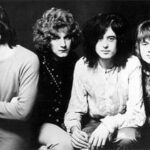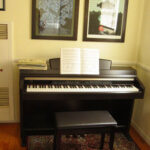When those who play piano professionally are asked which piano is the best one in the world today–the easy answer, of course, is typically Steinway. A Steinway piano is still considered the greatest ever and ranks #1 with the majority of artists around the world endorsing it with their signature on the company’s website. But in recent years, an Italian-made grand piano has started to capture the imagination of a lot of legendary pianists; so much so that a few internationally-renowned pianists have recently declared they’ll only play on this one piano for all concerts and recordings in the studio. It’s called a Fazioli, named after Italian concert pianist and engineer Paolo Fazioli. Even though it was created already in 1978–careful additions have been made to it through its evolution that make it one of the most carefully-crafted pianos in the world today.
The original aim of the company in the late 70’s was to create a piano that had its own unique sound (in a time when many were made to sound virtually the same), produce smaller numbers of them due to the higher-quality materials put forth into making them and to make it an ever-evolving piano creation in progress to live up to modern standards as each decade wore on. When they were finally showcased for the first time at various preview shows in Italy during the late 70’s and early 80’s–it was treated almost as if it was an Italian fashion show instead of a preview of pianos. Well, the Fazioli was almost as beautiful as a female Italian model…and probably just as tall if set on its side.
Piano makers in Germany were a bit flummoxed to learn then about the Italians trying to make a world-class piano. To that time, Germany was the leading piano manufacturer globally. At that time, also, a lot of jazz and classical pianists were having fits of praise for the awesome German-produced 9-foot Bosendorfer piano…complete with several extra bass notes. German piano manufacturers perhaps might be considered to be more about engineering a piano that enabled sheer power and depth of sound and with an excess in design. The Italians were arguably more careful in detailing the nuances of a piano’s design and the subtleties of tone.
By the time the mid-80’s rolled around–several world-renowned concert pianists were starting to create the buzz for the piano by playing on it in concerts halls overseas as well as at Carnegie Hall. Critics picked up on its unique sound immediately and were noting that it seemed to have a special way of producing more of a sweeter tone than any other piano around at the time.
Of course, the design of the piano that made it sound like nothing else around is part of the uniqueness and brilliance of Paolo Fazioli and his team of engineers…
The technical add-ons to the Fazioli that make it stand alone in the piano world…
From the start, the mission of making the Fazioli was to focus on creating a piano that made a sound that would be the most pleasing to the discerning ear. Their mission statement was to create a piano tone that enabled even harmonic components, being able to go from a triple pianissimo (ppp) to a triple fortissimo (fff) (very quiet to very loud for those not familiar with piano terms) without muddying the sound as is usually the case when doing a triple fortissimo, create a longer duration in certain tones played to enable an essence of cantabile (or a “sweeter” tone) and manufacture each key so you can distinguish every tone individually when playing a polyphonic work by Bach or other contrapuntal composers.
For an artist always trying to achieve the best possible sound on a piano–this was a godsend statement. It’s no wonder a lot of artists who had challenges trying to achieve a singing tone on many of the world’s best pianos in earlier decades went wild when finally being able to play on a Fazioli for the first time.
It’s quite interesting what the engineers and manufacturers added to the piano to enable a pianist to control that sense of sound a little better. Maybe some would think that it’s cheating to enable the use of a pedal in creating a carefully-articulated soft sound. The Fazioli, though, added a unique fourth pedal to its base that enables the pianist to shift the keyboard slightly down close to the strings inside the body of the piano. This creates less force on the strings–hence being able to produce softer sounds. It’s said that doing glissandos (basically dragging your finger(s) across the keyboard as you did as a kid) and articulating legato (plus fast passages) works much easier when using this fourth pedal.
Again, however, some might say it takes away from establishing that naturally on a lesser piano. It’s all in your own interpretation of who puts in the most work playing a piece: The piano or the artist.
____
That obsession with sound all stems from the strings inside the piano, of course. In what’s called the duplex scale (nothing related to moving a loud piano into a rental duplex)–the space interval between the strings makes all the difference in the particular tone the piano makes. In the front and back duplex scales, the Fazioli engineers used a secret, patented system in the spacing that enables the brass bridge in the back to slide along on a steel surface. Engineering secrets like this are probably coveted in the piano manufacturing world–and wouldn’t surprise me if they have a lot of their design secrets under lock and key so they can forward the idea that they may be the leading piano in the world within the coming decades.
This piano isn’t for the person or family who’s looking for a money-saving investment in a grand piano for their home. There are differing models and lengths to choose from (which can be a wide variance in price)–but when you consider that the company uses 18k gold coating on some of the brass parts to prevent oxidation from occurring–you can see this is a luxury type of piano.
If you’re an artist–you might be lucky enough to play on one eventually–because it’s now becoming the go-to piano if you’re one who pays careful attention to the production of sound in recordings and in the concert hall. Most recently, Herbie Hancock became one of the internationally-celebrated artists to endorse and play on Faziolis all the time, everywhere (and maybe why he’s up for Best Album of the Year at the Grammys). Jazz pianist Marian MacPartland is known for playing on them and endorsing them on her celebrated NPR show “Piano Jazz.” And, of course, many classical pianists have been playing on it since the 80’s.
So far, a lot of pop pianists have stuck mostly with Yamahas or Steinways–but it’s looking likely the Fazioli will snowball into other categories of the music world by 2010.
That means Italy will not only have the best food and fashion, but also creating pianos that give off the best triple fff’s. (The 5 F’s.)



